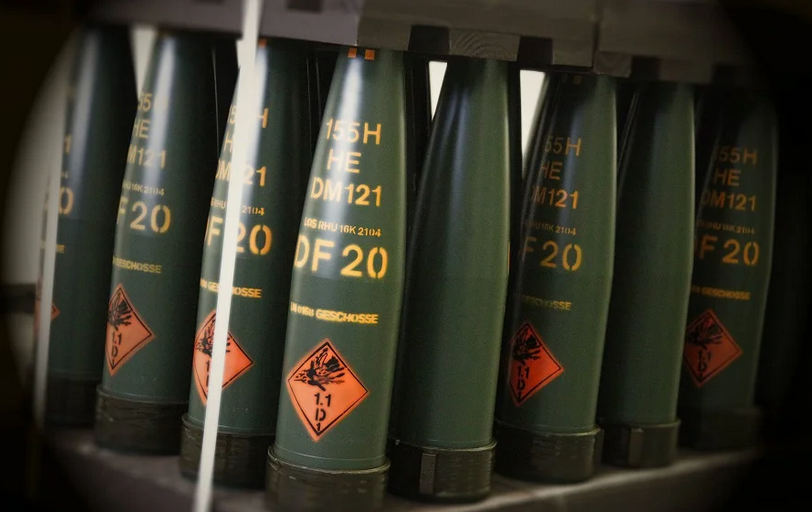By PATRICK TURNER, Science & Technology Editor, Defense One

Though the United States and European allies have ramped up artillery shell and ammunition production in recent months, it still doesn’t come close to meeting Ukraine’s needs, according to a paper from German researchers writing for the European Council on Foreign Relations, published last week.
Ukraine uses a lot of shells simply to hold the territory it has won back from Russia since the start of the 2022 expanded invasion of Ukraine—as many as 6,000 rounds daily. The U.S. and European allies responded by greatly expanding shell manufacturing, and are expected to produce 1.3 million 155mm Howitzer rounds this year, according to the paper’s authors, and more capacity is slated to come online in 2025.
But Ukraine’s needs are far greater. Last March, Ukraine’s Defense Secretary Oleksij Reznikov said Ukraine needed 356,400 shells a month “for the successful execution of battlefield tasks,” which works out to 11,800 shots per day.
However, an Estonian study from December notes that even those numbers are well below what Russia is capable of producing. “In 2024, production and recovery will increase further and would likely reach up to 4.5 million units. This volume significantly exceeds the amount of artillery ammunition available to Ukraine,” the Estonians note.
The authors of the German study, which examined more than 200 papers and other resources, say that at current levels the math doesn’t work out well for Ukraine.
Russia is producing significantly more artillery than what Ukraine has available, researchers say.
The 1.3 million rounds of 155mm ammunition in 2024 “would correspond to around 3,600 shots per day. If you compare this value with the minimum that the Estonian Ministry of Defense states in its study with a daily requirement of 6,700 — or even our even lower value of a minimum defense of 5,000 per day — this is far too low,” the paper states.
Still, Western officials contend that Russia’s ammunition production capabilities are insufficient to achieve its objectives. So while they may have the shells, they don’t have the bullets.
Gustav Gressel, one of the paper’s authors, told Defense One that “EU and U.S. production are set to increase throughout the year …so we are below this average now, but by the end of the year the situation will improve for Ukraine. If, of course, the supplement will pass Congress and the U.S. is on board.”
The U.S. is poised to produce 2.6 million 155mm rounds per year by 2025, Defense One’s Sam Skove recently wrote. But, Gressel said, those numbers are for next year.
“Ammunition production is expanding both in the U.S. and the EU, both of which are scheduled to produce over 1 million rounds in 2025. However, production right now is lower. And in the U.S., the third tranche of subsidies to expand production is held up in Congress, and I do not know how far the delay may cause problems in the expansion of production.”
Defense One delivers news, timely analysis, and bold ideas on the topics and trends that are defining the future of U.S. defense and international security.
Founded in 2013, Defense One gives military and security professionals, stakeholders, and citizens what they need to know, from senior leaders in Washington to commanders abroad and next-generation thinkers far from the political scrum. Our journalists write breaking news of the day and in-depth stories shining a critical light across the national security landscape. Defense One publishes innovative, fearless commentary from old hands and new voices in the national-security community. We stage live events with exclusive newsmaker interviews and discussions led by our experienced journalists. And we produce award-winning podcasts and informative videos.





